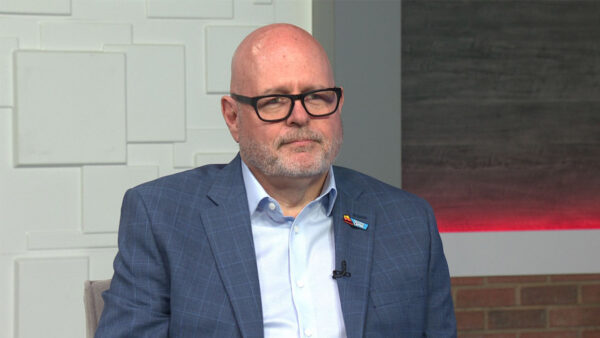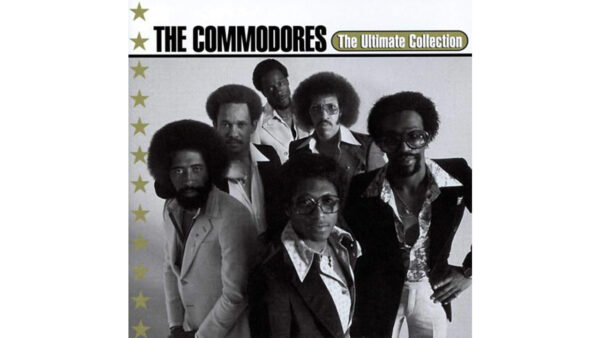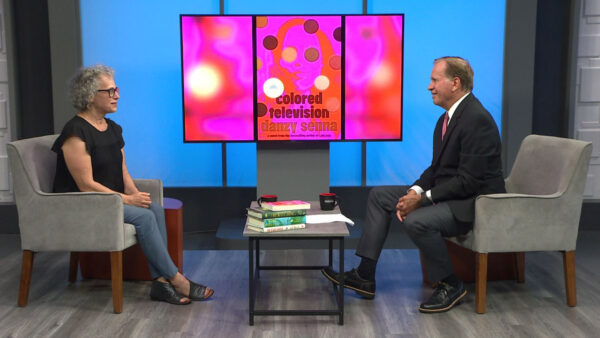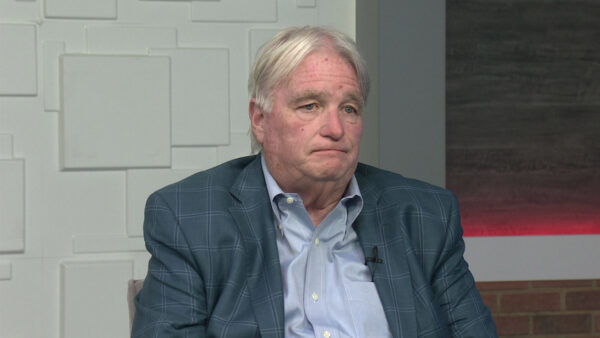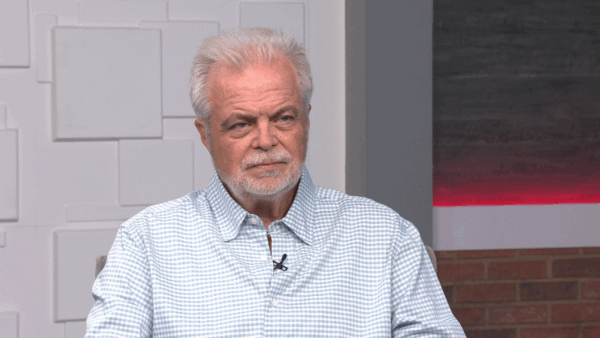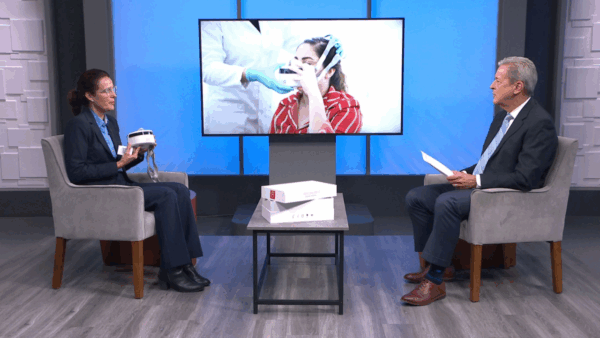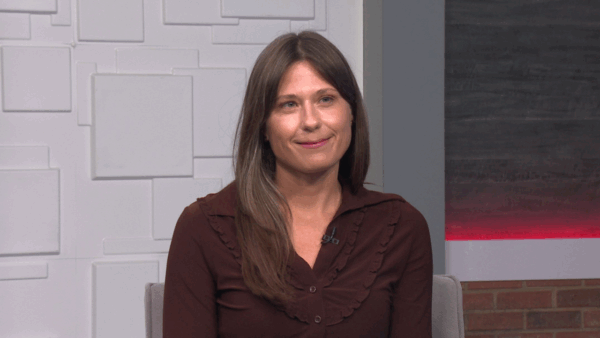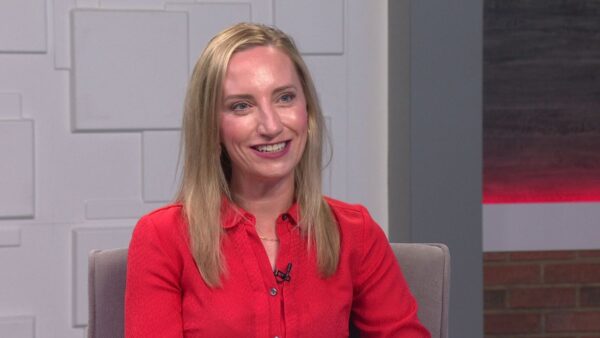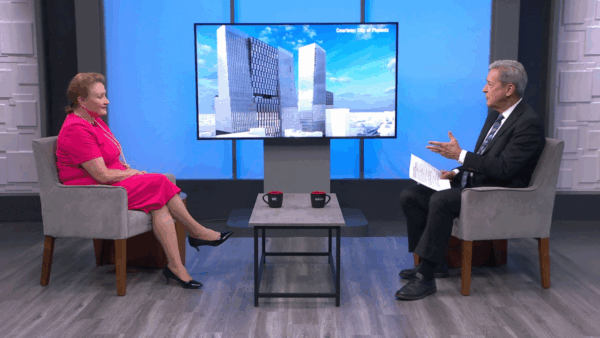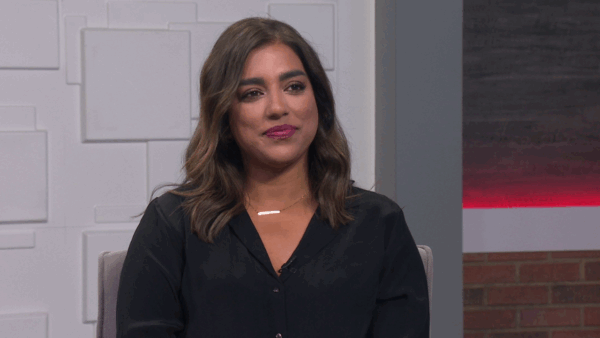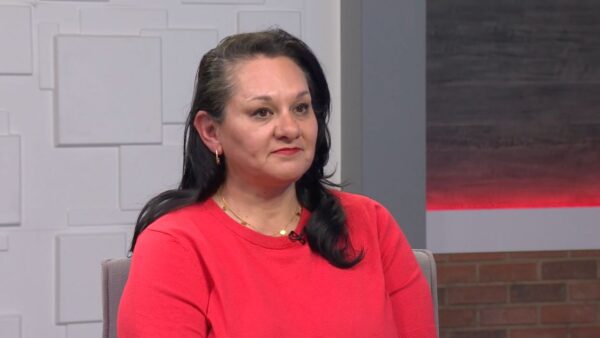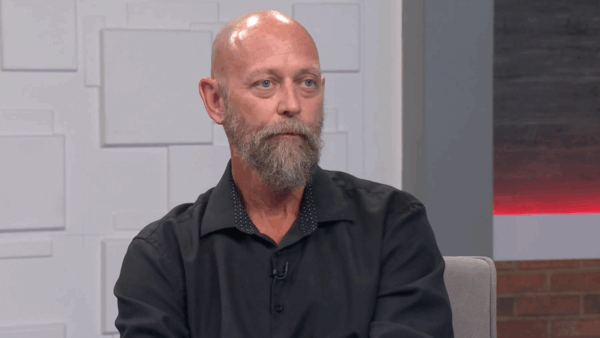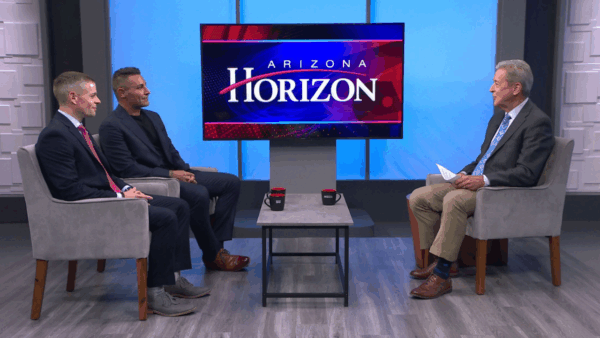A look at the challenges and successes Arizona’s tribal governments are experiencing as they develop sustainable energy resources. Guests include Ann Marie Chischilly, Executive Director of the Institute for Tribal Environmental Professionals (ITEP) at Northern Arizona University, and the Hopi Tribe’s Renewable Energy Director Ken Lomayestewa.
Ted Simons: The institute for tribal environmental professionals at NAU is helping tribal governments protect their natural resource through education and training. Now I-TEP is helping tribes grow jobs and achieve energy independence by turning their natural resources into clean, renewable energy. Here to talk about the work is I-TEP executive director Ann Marie Chischilly, a long time water, environmental and energy attorney and member of the Navajo nation. Also with us is Ken Lomayestewa, renewable energy director for the Hopi tribe. Good to see you both here. Thanks for joining us.
Ann Marie Chischilly: Thank you for having us.
Ken Lomayestewa: Thank you.
Ted Simons: The institute for tribal environmental professionals. Tell us more.
Ann Marie Chischilly: Great. I-TEP is a 19-year-old organization located on the NAU campus. What we have been doing over the past 19 years is we train, educate and offer technical assistance to tribal environmental professionals throughout the nation. We have been able to serve 500 of the 565 tribes. So --
Ted Simons: That means working with Feds, working with state, working with the tribes. It means a lot of work, doesn't it?
Ann Marie Chischilly: It does, it does. The team is dedicated to helping build tribal capacity in the environmental mediums including air quality, solid waste, climate change, and we have a very robust environmental education outreach program as well that reaches K-through-20.
Ted Simons: I want to talk about the resource center in a second.
Ann Marie Chischilly: Sure.
Ted Simons: As far as this relationship with you, your tribe, your energy concerns. Talk to us about the dynamic. What's going on?
Ken Lomayestewa: The Hopi tribe is pursuing some energy development. We have been doing wind resource assessments. We are in our second year of wind resource assessments. We're also looking into doing utility scale solar. Those are some of the projects we're currently pursuing.
Ted Simons: Now are these hard, fast plans, are they still in development? How far along are you?
Ken Lomayestewa: We're at the beginning phases of this. We have done feasibility studies for the wind. We're looking at trying to locate developers or partners to do the solar project. So we're right now at the very beginning phases of solar.
Ted Simons: I would imagine trying to develop partners and funding in such has to be difficult in this day and age.
Ken Lomayestewa: Oh, yeah. We have a lot of people coming around, but we're doing our own thing to find the right people out there. We wanted to make and do a very, very good relation -- relationship with a developer to make our projects work.
Ted Simons: Is there a way for you now to help this particular tribe, this particular project? How does that work?
Ann Marie Chischilly: Great. Thank you. I-TEP has a new program coming on called the Tribal Clean Energy Resource Center or T-CERC. And T-CERC will help Ken and the Hopi nation with offering technical assistance, business planning, policy planning, and offering internships. All these factors that tribes directly ask I-TEP for. I-TEP has always carried the model of listening to tribes and building our curriculum around them. This is one more way I-TEP has been able to do that.
Ted Simons: When you're listening, what are you hearing? What are the challenges? What are the recurring themes, if you will?
Ann Marie Chischilly: Recurring I would say there's the interagency. There are a lot of agencies that work with tribes on development and not a lot of communication between the interagency. Of course funding, the financing background is another part of that.
Ted Simons: The concerns you would have regarding projects you were talking about earlier. What are the major challenges?
Ken Lomayestewa: The major challenges we're trying to overcome are trying to get a power purchase agreement with the utilities in the local area. We also have very serious transmission constraints, transmission lines running through the area are not available. We do have some transmission but they are small. We don't know the capacity. They may be full. So that's one thing we need to take a look at.
Ted Simons: That's interesting because a lot of people think, solar - yay, wind - yay, everything's great, but you have to have transmission lines or everything is just a project.
Ken Lomayestewa: That's right.
Ted Simons: Who are you discussing this with?
Ken Lomayestewa: We're going to be contacting APS, our local utility. Also with help from I-TEP and other people that we have partnered with we're trying to get a handle on which are the most important things we can take care of.
Ted Simons: I understand it's things like checker board pattern of land, whether it's private or public, whether it's a tribe. That could be a problem too as far as not only transmission lines but setting up a solar or wind facility.
Ken Lomayestewa: You have to get clearances. Wherever the land holders are.
Ted Simons: That's something you can assist the tribes with, making those kinds of relationships in the first place?
Ann Marie Chischilly: I would like to develop a stronger relationship with the Brewer of Indian affairs, who holds a lot of these land issues and helps, hopefully we can help the tribes move through those issues as well. As far as Indian lands, to find who actual listees are and find out what we can do to help.
Ted Simons: As far as cultural and traditional concerns, I would imagine as with all groups of folks there are some tribes people are all gung ho for this and others saying I'm no so crazy about all this. How does that play into this?
Ann Marie Chischilly: Listening to them. Sitting down with tribes is one of the first things we do. Taking a look at their tribal ecological knowledge is another thing. I have seen where a lot of times tribes will say wind in one section looks very good on radar, but if you actually talk to the elders that may be a sacred site so that's automatically off the board discussion. So you move to the next site. You have to be very careful and very open about what tribes consider sacred and not sacred in their area.
Ted Simons: That tradition, that culture, that concern, are you seeing it with your tribe?
Ken Lomayestewa: Absolutely. We have done a lot of cultural clearances on these sites and we do find sites that have sensitive areas, so we do bring traditional leaders and other leaders to the table and try to inform them of what we're doing, get their point on what their knowledge is about the sites.
Ted Simons: So that communication, that dialogue has to be ongoing I would imagine?
Ken Lomayestewa: It has to be there. If it's not there and they find out after the fact that project is going to get shut down.
Ted Simons: Yeah, I'll bet it will. The idea of I-TEP just actually helping strengthen sovereignty for tribes, is that true? Is that a valid statement?
Ken Lomayestewa: I say yes.
Ted Simons: You say yes?
Ann Marie Chischilly: Yes. Being able to build capacity for your own tribe, being able to permit, regulate your own tribal space, reservation, that's sovereignty. Being able to build your own energy cycles, your own food, water, that's sovereignty. That's all so I would say I-TEP helps.
Ted Simons: When you put it that way for your tribe in your situation it has to be a plus.
Ken Lomayestewa: It will help somewhere along the line.
Ted Simons: And the impact of renewable resources on economic development for your tribe, big?
Ken Lomayestewa: Big. It's big. We're trying to do a large scale process, and we're having some issues about because its lack of transmission available, the capacity available is not there, so we're being told think on a smaller scale like two to 300 watts, which is not really economical for us. We want to see if we can build in larger scale than that.
Ted Simons: Ok, very quickly here. Optimistic about the program in the future?
Ann Marie Chischilly: Very excited.
Ted Simons: Very good. Good to have you both here. Thank you for joining us.
Ken Lomayestewa: Thank you.
Ann Marie Chischilly: Thank you for your time.
Ann Marie Chischilly:Executive Director, Institute for Tribal Environmental Professionals (ITEP), Northern Arizona University; Ken Lomayestewa:Director, Hopi Tribe Renewable Energy;
